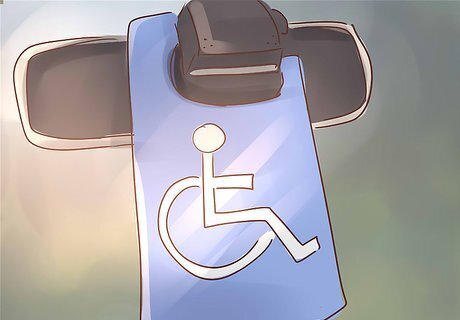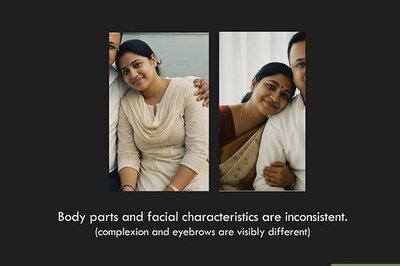
views
Qualifying for Disabled Parking Privileges

Meet the criteria for disability. To qualify for disabled parking placards or license plates in Colorado, your mobility must be impaired by one of the following: You cannot walk 200 feet (61 m) without stopping for rest; You need a wheelchair, or cannot walk without a cane, brace, prosthetic device, or other assistance; You have lung disease which restricts your breathing to such an extent that your forced expiratory volume for one second is less than one liter when measured by spirometry, or your arterial oxygen tension is less than 60 mm/hg at rest; You use portable oxygen; You have a class III or IV cardiac condition according to American Heart Association standards; or Your ability to walk is severely limited by an arthritic, neurological, or orthopedic condition.

Get an application from your county motor vehicle office. To get Colorado disabled parking placards or license plates, you must use Form DR2219, which you can find at your county motor vehicle office or online at the Colorado Department of Revenue website.

Have your disability verified by a medical professional. There's a portion of the DR2219 application form that your doctor must fill out verifying your disability. Qualified medical professionals include a physician licensed to practice medicine in Colorado or a neighboring state; a commissioned medical officer of the U.S. Armed Forces, Public Health Service, or Veterans Administration; and advance practice nurses or physician's assistants. Chiropractors or physical therapists also can provide verification, but only for temporary disability to get a temporary 90-day placard.

Meet an impairment classification. Your doctor must classify your impairment as permanent, extended, temporary, or short-term. How your impairment is classified determines what parking permit options you have. You are permanently disabled if, given the current state of medicine, your doctor does not expect your condition to improve in your lifetime. You have an extended disability if your doctor does not expect your condition to change within 30 months of the day your disabled parking permit is issued. Temporary conditions are those expected to last less than 30 months from the day you are issued a disabled parking permit, while short-term conditions are expected to last 90 days or less. If your impairment is classified as short-term, you are only eligible for a temporary 90-day placard.
Applying for a Placard and Plates

Complete the rest of your application. Fill out your name and address as they appear on the identification you will bring with you to the county motor vehicles office. You also need to choose which option you want for your disabled parking permits. If you have permanent, extended, or temporary disability and you own or co-own a vehicle, you can choose one license plate, two license plates, one plate and one placard, one placard, or two placards. If you don't have a vehicle, you can choose one or two placards. If you have a short-term impairment, you only qualify for a temporary placard. This placard is valid for 90 days and can be moved from one vehicle to another.

Take your completed application to the county motor vehicles office. To get disabled parking privileges in Colorado, you must apply in person at the motor vehicles office in the county where you live.

Show secure and verifiable identification. A staff member at the county motor vehicles office must verify your identification before issuing your disabled parking permit. Acceptable forms of identification include a Colorado driver's license, permit or identification card, either current or expired less than a year; out-of-state photo identification that is current or has been expired for less than a year; or a U.S. passport or immigration card.

Show the title or registration for your vehicle. If you are planning on getting one or more disabled license plates for your vehicle, you must show the title or registration for any vehicle you want to tag. If you want a set of plates, you must be the registered owner or co-owner of the vehicle. The registration receipt will identify you as the owner authorized to use the plates or placard. While there is no fee for disabled placards, if you get disabled plates you will pay the same fees and taxes as are assessed for any regular set of plates and registration in Colorado. The only exception is a set of disabled veteran plates, for which there is no fee. If you are applying for disabled veteran license plates, you also must bring a written statement from the Veteran's Administration or a branch of the armed forces stating that you have a qualifying disability that is connected to your military service.

Use your plates or placard correctly once issued. If you want to park in disabled parking, you must display your plates or placard according to Colorado state law, or risk getting your vehicle towed. Placards must be hanging from the rear view mirror at all times if you're parked in disabled parking. You can transfer it to any vehicle in which you are either the passenger or the driver, but you must carry the placard registration receipt at all times. If you co-own the vehicle, only you can use the disabled parking plates. If both you and the other owner are eligible for disability privileges, the other owner must apply separately to exercise those privileges. The plates are issued to the individual, not to the vehicle.
Re-certifying Your Disability

Confirm the deadline for re-certification of your disability. Unless you have disabled veteran license plates, you generally must have your disability re-certified once every three years. If your disability is classified as permanent, you can self-certify on your third and sixth year renewals either by mail or in person. If you have a red temporary placard, you may renew it once by having a medical professional verify your disability at the expiration of the initial 90-day period.

Get a copy of the DR2219 application. You must complete the DR2219 form that you used to apply for your initial disabled parking permit.

Visit your doctor. For temporary placards, you may only renew once with verification of your disability by a medical professional. Three-year placards or plates require verification by a medical professional every third year with renewal if you have an extended or temporary disability. If you have a permanent disability,you only need a medical professional to verify your disability every ninth year, or on your third renewal. However, your self-certification renewals still must be signed by a professional.

Submit your completed application to your county motor vehicles office. If you are permanently disabled, you may submit your renewal by mail in your third and sixth year. All other renewals must be made in person at the county motor vehicle office.



















Comments
0 comment